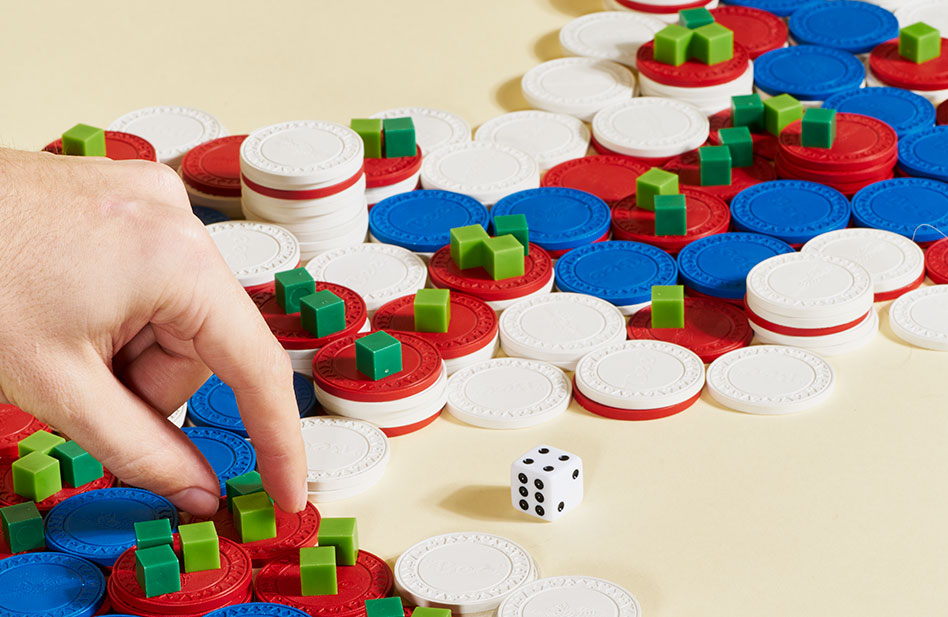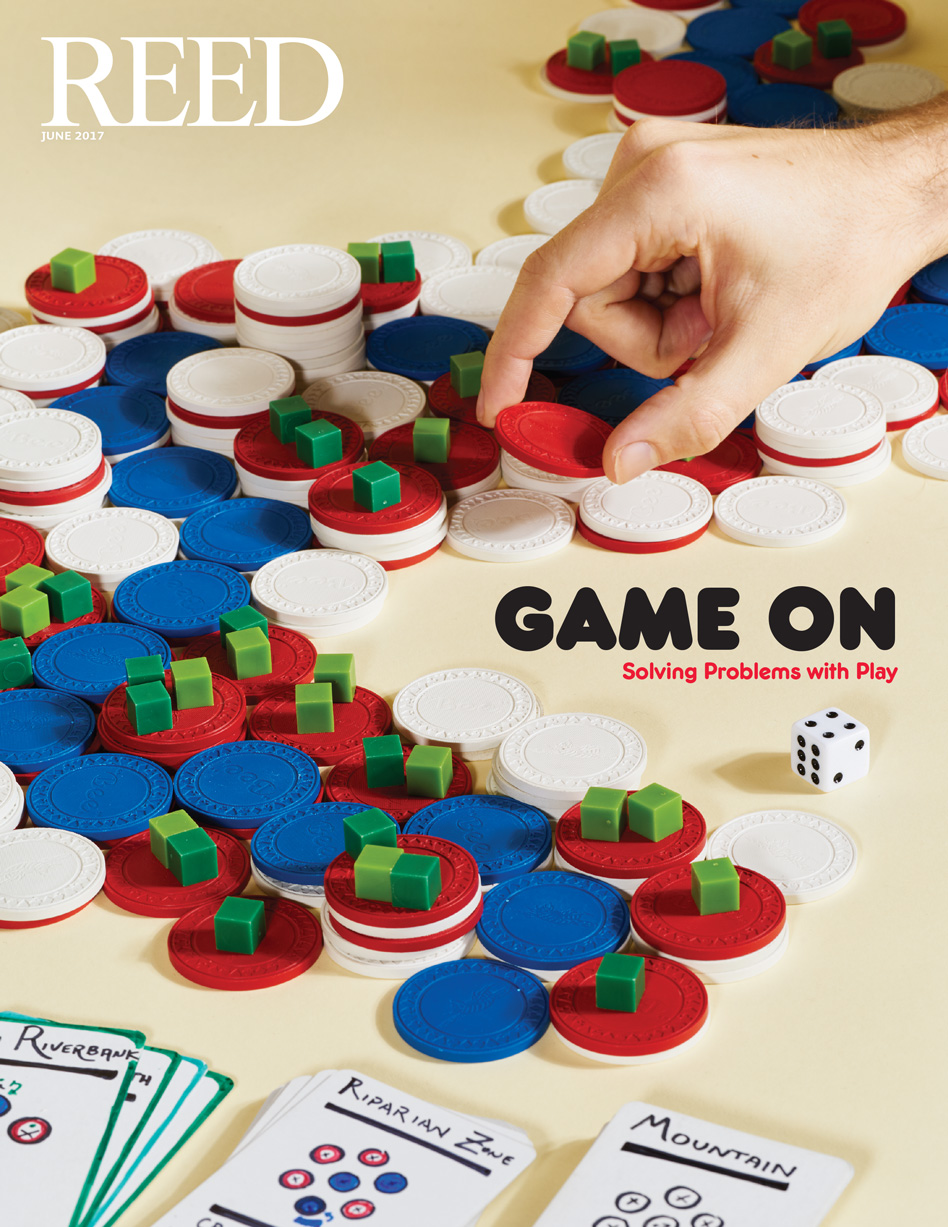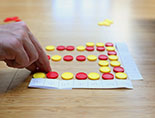
IRIS login | Reed College home Volume 96, No. 2: June 2017
Games
Game On

Our cover features a game designed by Wick Perry ’13 about geologic process. Players assume the role of one of four gods (Pele, Enki, Gaia, or Anansi) and collaborate to make an island. White chips are rock, red chips are soil, blue chips are rivers, and the green cubes are trees. Players draw cards and create geologic features. Wick hopes to complete the design after finishing his current project, Crescent Loom. Photo by Clayton Cotterell
Solve Problems. Play Games.

Cover of Reed Magazine, June 2017
Photo by Clayton Cotterell
Angry Birds. Minecraft. Pokemon Go. Sometimes it seems like we’re surrounded by people playing games. On the bus, in doctors’ waiting rooms, in cafes, we race furiously against the clock to dodge alligators, annihilate castles, hunt for seven-letter words. We build bridges, elude robots, trap queens. We shoot, we score. Has there ever been a period in human history where so many people spend so much time on games?
The truth is that games aren’t just for fun any more. They constitute an entire art form. They can teach us tactics, strategy, deception, teamwork, leadership, and patience. They also offer a powerful framework for learning new skills.
In this issue, we decided to take a look at some of the ways in which Reed students, professors, and alumni are exploring this vast and exciting field.

Inside the Mind of a Microbe
Wick Perry ’13 designed a game where players build their own creatures— and construct their brains.

Disconnecting the Dots
Florin Feier ’17 devises an unbeatable strategy for a variant of Connect-4.

Play Your Way to Happy
Can a smartphone app help you find happiness? Psychologist Acacia Parks ’03 has a pretty good idea.

LATEST COMMENTS
steve-jobs-1976 I knew Steve Jobs when he was on the second floor of Quincy. (Fall...
Utnapishtim - 2 weeks ago
Prof. Mason Drukman [political science 1964–70] This is gold, pure gold. God bless, Prof. Drukman.
puredog - 1 month ago
virginia-davis-1965 Such a good friend & compatriot in the day of Satyricon...
czarchasm - 4 months ago
John Peara Baba 1990 John died of a broken heart from losing his mom and then his...
kodachrome - 7 months ago
Carol Sawyer 1962 Who wrote this obit? I'm writing something about Carol Sawyer...
MsLaurie Pepper - 8 months ago
William W. Wissman MAT 1969 ...and THREE sisters. Sabra, the oldest, Mary, the middle, and...
riclf - 10 months ago